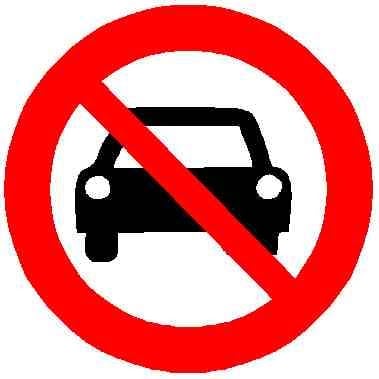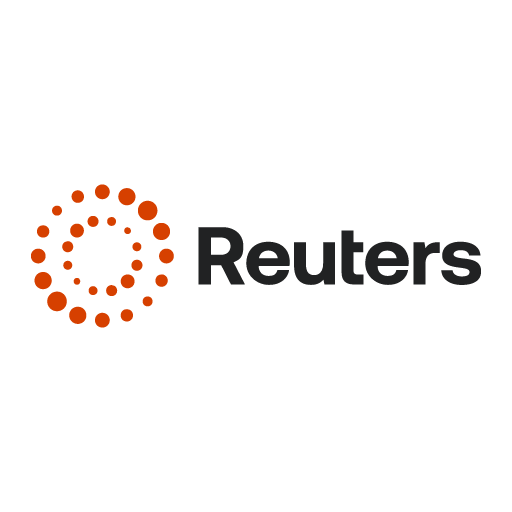- 54 Posts
- 17 Comments


deleted by creator


Wonderful news. That means less electronic junk to recycle, much less pollution.
I’m actually quiet happy to own a dumbphone and no smartwatch. Having a powerful Linux laptop is great, but I came to the conclusion humans need low-tech for their mental health. Not having tech around me helps me focus, go on nice walks, write what’s on my mind and read books. I just feel happier.
If you aren’t careful, the things you own can end up owning you.


“Extra Verification steps”
I know how large social media companies operate. This is all about increasing the value of Reddit users to advertisers. The goal is to have a more accurate user database to sell them.
Zuckerberg literally brags to corporations about how good their data is on users:
https://www.facebook.com/business/ads/performance-marketing
Here, Zuck tells companies that Instagram can easily manipulate users into purchasing shit:
https://www.facebook.com/business/instagram/instagram-reels
Always be wary of anything available for free.
There are some quality exceptions (CBC, VLC, The Guardian, Linux, PBS, Wikipedia, Lemmy, ProPublica) but, by and large, “free” means they don’t care about you. You are just a commodity that they sell.
Facebook, Google, X, Reddit, Instagram… Their goal is keep people hooked to their smartphone. The recipe is very simple. You give them small dopamine hits (likes, upvotes) followed by a small break with outrageous content/emotional content. Then another dopamine hit.
Keep them hooked, gather their data, and sell them ads.
The people who know that best are former top executives :
https://www.theguardian.com/technology/2017/oct/05/smartphone-addiction-silicon-valley-dystopia
https://www.nytimes.com/2019/03/01/business/addictive-technology.html
https://www.today.com/parents/teens/facebook-whistleblower-frances-haugen-rcna15256


There is a guy named Cal Newport.
He graduated from the Massachusetts Institute of Technology with the highest grades.
He is now a tenured Professor of Computer Science.
Cal Newport says using a pen and paper is incredibly important. It helps him focus.
He also avoid social media. I highly recommended his book “Digital Minimalism”.

I’m not Canadian. I studied in Canada before moving back to my home country.
But I genuinely love this country and I want to see Canada thrive.
How can I say this without offending anyone…? I’m about to ruffle some feathers.
Every single political news that seems to come out of Alberta makes me think "Wow !! These folks seem the most ignorant in Canada"
Your Premier Danielle Smith attended a party with Tucker Carlson.
This is the same guy who said angry Ottawa truckers should "find Trudeau" and “deal with him”. He wasn’t joking. He said that again and again.
Is this really what you want? A bunch of angry guys lynching the Prime Minister? Let’s say it actually happens. They storm his house and beat him up. Then what? What exactly happens next…?
How can any self-respecting Canadian Premier attend an event with a man who made these statements?
She was once a newspaper columnist and published articles defending tobacco companies.
For instance, she attacked the World Health Organization and claimed smoking wasn’t actually very harmful. She accused scientists of being “corrupt” (lol) and she quoted a tobacco industry lobbyist named Gio Batta Gorri:

How did this such dishonest weasel become Head of Government?
Now, she introduce a bill that will allow corporations to wire money to Alberta parties:
How exactly would that improve the life of ordinary people?? And why are so many members of the Alberta Legislative Assembly going along with this plan?!
These stupid politicians didn’t fall from the sky. They all got elected 🤦
I don’t know why this is happening. It’s so sad.

Cancel contracts with Microsoft Office
British Columbia could save a lot of money, simply by switching to LibreOffice.
https://www.libreoffice.org/discover/libreoffice/
I donate money to the LibreOffice project. I use it and I’m super satisfied. In fact, I don’t even remember the last time I used Word or Excel.


Getting a dumbphone was one of the best decisions I took in my life. It helps me focus better and read books. I don’t actually need the internet with me 24/7. If you really need me, you can call.
Try it. Some people will call you crazy. Just ignore them.


San Francisco is the city with the most tech engineers and software developers. It’s the US city with the most tech entrepreneurs. The roads are full of robot cars. You see people walking around with tech glasses and weird devices. You could throw a rock in the street and it will probably land on some tech guy.
It’s a complete disaster. Homeless people everywhere. Families unable to see a doctor or a dentist. Desperate men in the streets, injecting themselves with drugs. Luxury private schools where smartphones are banned and professors give tips to get into Stanford. Poor public schools for ordinary kids.
What kind of Utopia is this? This is not utopia. It’s a nightmare.


deleted by creator


deleted by creator


Microsoft essentially created a private sales tax on every computer sold in the world. This is how Bill Gates became extraordinary wealthy.
The US should have won that anti-trust case. If you want to understand how Gates saved Microsoft, read this 1998 investigation that I found in newspaper archives :
HOW MICROSOFT SOUGHT TO GAIN ALLIES AND INFLUENCE IN WASHINGTON
WASHINGTON – Twenty months ago, Rep. Billy Tauzin walked into the office of Bill Gates, chairman of Microsoft, bearing a 10-inch-by-10-inch white box and a warning.
Tauzin, R-La., the chairman of a subcommittee that oversees the telecommunications industry, placed the box on Gates’ desk. Inside was a lemon meringue pie, a reminder of another pie that had been thrown in Gates’ face several weeks earlier by a Microsoft critic.
The message to Gates, the richest man on earth and the leader of the digital world, was blunt: You need to make friends in Washington.
At the time of Tauzin’s visit in early 1998, the Justice Department was contemplating filing its antitrust suit against Microsoft.
“I told him he was being demonized,” Tauzin said in an interview. “I said he had to win the antitrust case in court, but there was also the court of public opinion.”
Gates apparently took Tauzin’s message to heart – with a vengeance. While Microsoft and its executives contributed a relatively modest $60,000 to Republican Party committees in 1997, the company’s contributions in 1998 shot up to $470,000 as part of its overall political contribution of $1.3 million. The 1998 figure included donations to political candidates, with the bulk of the money going to Republicans.
This year, the company’s contributions of nearly $600,000 have been more evenly divided between Republicans and Democrats, according to Federal Election Commission records.
Microsoft’s lobbying, focused on swaying Congress and creating a generally friendlier climate in Washington, has had little if any effect on the current antitrust litigation in U.S. District Court, where the company was dealt a major setback on Friday by Judge Thomas Penfield Jackson’s initial findings that it had used monopoly power to stifle competition.
Rather, the lobbying campaign is a long-term strategic push intended to alter the political terrain where future power struggles will be fought.
Campaign donations were just one element of Microsoft’s multimillion-dollar effort to win allies in Washington. The company also poured millions of dollars into an aggressive public relations and political offensive, hiring an armada of well-connected lobbyists and underwriting the work of research groups, academics and consultants who have made arguments sympathetic to Microsoft’s defense in the antitrust case.
The company’s lobbying budget nearly doubled in 1998 from the previous year, to $3.74 million, according to the company’s lobbying disclosure reports, and is on pace this year to significantly surpass that figure.
Gates and his top lieutenants have made dozens of trips to Washington, cultivating powerful figures in both parties and hiring some of the city’s priciest lobbyists.
Microsoft has retained Haley Barbour, former chairman of the Republican National Committee; Vic Fazio, a former Democratic congressman from California; Vin Weber, a former Republican congressman from Minnesota; Tom Downey, a former Democratic congressman from New York and a close friend of Vice President Al Gore; Mark Fabiani, former special counsel to the Clinton White House; and Kerry Knott, former chief of staff to Rep. Dick Armey of Texas, the House majority leader.
Microsoft has also given hundreds of thousands of dollars to research groups, trade groups, polling operations, public relations concerns and grass-roots organizations. It has financed op-ed pieces and full-page newspaper advertisements, and mounted a lobbying effort against an increase in the Justice Department’s antitrust enforcement budget.
In June, Bill Gates met for lunch with the Republican leaders of the House in the small whip’s room off the House chamber. They discussed Microsoft’s public policy agenda, ranging from exports of encryption software to Internet privacy to antitrust actions, said several participants at the meeting. Knott, now a top official in Microsoft’s Washington office, attended the session.
Eight days later, Armey introduced what he called his “e-Contract,” a list of Republican legislative initiatives that pointedly adopted Microsoft’s view of the role of government antitrust actions, like the one that now threatens to dismantle Microsoft.
“When federal agencies use heavy-handed tactics to target specific companies,” the Republican document states in language that echoes Microsoft’s own, “the real message they send to the market place is this: You could be next.”
Armey’s aides insist that the release of the document was just a coincidence and that Republicans had long opposed aggressive enforcement of antitrust laws. Microsoft officials also denied that they had influenced Armey’s priorities or his language. The package of Republican proposals is still before Congress.
Another Microsoft move on Capitol Hill drew criticism for heavy-handedness.
It is lobbying to trim the antitrust division’s budget brought a flurry of editorial condemnation. The Washington Post said Microsoft’s actions were “a comical caricature” of a company trying to bully its way through Washington."
One Justice Department official said, “Even the mob doesn’t try to whack a prosecutor during a trial.”
https://archive.nytimes.com/www.nytimes.com/library/tech/99/11/biztech/articles/07strategy.html
The reason why Apple displaced Microsoft as the richest company in the world? Billionaire Tim Cook is using tactics that are even more predatory. If you make any purchase with an app, Apple takes a 30% cut. And if the app makers refuse, Apple murders their business by kicking them out of the App store.
They banned the videogame Fortnite because the developers tried to resist:
These tech billionaires are economic tyrants. They want to use technology in order to enslave consumers and workers. They want customers to have no choice. They want their suppliers to be powerless. They want workers to have a limited number of huge employers. Their dream is absolute power over the market.
Fuck economic tyrants.
Only idiots kiss their ass.


deleted by creator


deleted by creator


Unfortunately, there are millions of dumb people who are still kissing his ass.

Every year, Canadian Medical Schools train far less doctors than France, Germany, Britain, Australia or Spain.
Canadian provinces make it extraordinarily difficult for foreign-trained doctors to practice. It doesn’t matter how knowledgeable and good you are. They will do everything they can to prevent you from working
It’s an absolute disgrace. It’s like the goal is to ensure there are as few doctors as possible.
Unfortunately, the public isn’t really aware of this. And because the public isn’t aware, the political class doesn’t act.


Microsoft, Apple, Exxon, Meta, Amazon, JP Morgan or Saudi Aramco are the most powerful corporations in the world. They are empires more powerful than many nations. Their CEOs always travel with armed men. They have the personal phone number of Donald Trump and Xi Jinping.
It’s healthy to scrutinize them. Steam is a problem, but Valve is nowhere near as powerful.


Getting really tired of these super-rich motherfuckers claiming they are victims of society


They own the following :
-
Atlas Hotels, a hotel real estate and operating company with 46 hotels across the UK
-
David Lloyd Leisure, a gym and health club company with 85 locations across the UK and Europe
-
London Hilton on Park Lane
-
The Trafalgar St. James London
-
The Lensbury
-
The Panama Pacifico, a US$700 million mini-city on the banks of the Panama Canal[3]
-
General Healthcare Group, the UK’s leading private health provider with 67 hospitals
-
90 private care homes
-
Crowne Plaza hotel in Cambridge
-
The Empire, Leicester Square
https://en.wikipedia.org/wiki/London_%26_Regional_Properties
-

The Eastern Townships autoroute, running southeast from Montreal, opened to traffic in 1964. The New York Times called it “Canada’s newest superhighway,” and gushed about it as “good news for skiers.”
The article noted that the speed limit was 70 miles per hour in summer (this was a decade before Canada adopted the metric system) but only 55 mph in winter. It also wrote that, as part of a “master plan,” a final stretch of the autoroute still under construction would soon meet up with the U.S. Interstate system – bringing more Canadian tourists to New England, and more Americans to the Expo 67 World’s Fair.
One thing The New York Times did not find remarkable? That the highway was a toll road. The drive from Montreal to Sherbrooke cost $1.50, plus 25 cents to cross the Champlain Bridge. That’s $16.75 in today’s money.
A road paid for by drivers, not taxpayers, isn’t an unusual thing in Europe. Toll highways aren’t even uncommon in the United States, from the 423-kilometre Florida Turnpike to the 146-kilometre Sam Houston Tollway in Texas to the nearly 800-kilometre New York Thruway. New York is about to start charging cars to drive into the most crowded parts of Manhattan.
But in Canada? There aren’t many things that Canadian parties of the right, left and centre can agree on, but “free” roads – by which I mean taxpayer-subsidized driving – is one of them.
The Eastern Townships autoroute lost its tolls in 1985, courtesy of a Parti Québecois government. The new Champlain Bridge, completed in 2019 at a cost of $4.4-billion, is toll free, courtesy of the federal Liberals. In Ontario, highways 412 and 418 in Durham Region east of Toronto were opened a few years ago as toll roads, but the Progressive Conservative government ditched the tolls last year – a move long called for by the local New Democratic MPP.
In British Columbia, tolls on two relatively new Vancouver-area bridges were a key issue in the 2017 election. The Liberal provincial government promised to reduce the tolls; the NDP one-upped that with a pledge to remove tolls entirely, transferring all costs from drivers to taxpayers. The NDP has been the government ever since.
And in Toronto, former mayor John Tory once upon a time proposed tolling the Gardiner and Don Valley expressways, rather than maintaining them with property taxes. The idea was shot down by a Liberal premier.
In theory, the left opposes policies that promote pollution and urban sprawl. In theory, the right rejects burdening taxpayers with unnecessary government spending and favours user fees. In many countries, left and right have put these principles into practice when it comes to the cost of roads and driving. In Canada, not so much.
That’s why Canada is also an outlier on gas taxes.
Ours are among the lowest in the developed world. Yes, really.
A recent paper from three academics at the Université de Sherbrooke points out that not only are Canadian gas taxes low compared with peer countries, their relative weight has fallen.
Long before carbon pricing, provinces already had gas taxes – Quebec’s dates back to 1924 – while the federal excise tax on gasoline has been around since 1975. But the 10 cents-a-litre federal tax hasn’t gone up in 28 years. Most provincial gas taxes have similarly failed to keep pace with inflation. In 1981, Quebec’s gas tax was worth 1 per cent of the provincial economy; today, it’s worth less than half that. Relative to the size of the economy, the federal excise tax has been halved since the mid-1990s.
But don’t take some egghead professors’ word for it. The Canadian Fuels Association, representing “the companies who process crude oil into essential products like transportation fuels and get those products to market,” also says Canadian pump prices are far below other developed countries. Why? Lower taxes, mostly.
Canada’s levies – gas taxes, sales tax and carbon pricing – are higher than those in the U.S. But CFA data from last January shows that a litre of gasoline in Britain includes an extra 98 cents of tax. Drivers in Germany and Italy paid an extra $1.12 per litre in taxes. The French paid $1.30 more.
All of which helps explain why Canada is the world champion of gas-guzzling cars. Own the podium, Canada.
According to the International Energy Agency, Canadians are driving the planet’s least fuel-efficient personal vehicles. In 2017, the average Canadian ride got 8.9 litres per 100 kilometres. That compares with 8.6 litres/100 km in the U.S., 7.9 litres/100 km in Australia, and less than six litres/100 km in Germany, Britain, Italy and France.
Canadians were also driving the planet’s biggest personal vehicles in 2017 – and 61 per cent of new cars sold that year were not cars, but rather trucks, namely SUVs and pickups.
“Consumer preference for large vehicles,” the IEA says, “has offset the impacts of technical improvements on average fuel consumption.” Engineers keep figuring out how to move more mass with less gasoline; consumers, particularly in Canada, keep offsetting those engine improvements by choosing ever-larger vehicles.
The trend shows no signs of ending. Last year, according to Statistics Canada, 82 per cent of new Canadian light vehicles were trucks.
See you out on the highway.



















deleted by creator